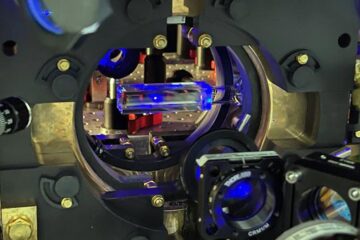Latest News

New Findings About Brain Proteins Suggest Possible Way to Fight Alzheimer’s
The findings, available online in the journal Proceedings of the National Academy of Sciences, suggest a promising new tactic against the devastating illness,…

Safe Food Handling Labels on Take-out Containers Can Help Restaurants Stand Apart in the Marketplace
“With leftovers, people need information the moment they pull that container or clamshell package from the fridge,” said Doug Powell, a K-State associate…

Sand Dunes Reveal Unexpected Dryness During Heavy Monsoon
But the sandy dunefields that mark the desert margin between greener pastures to the south and the Gobi Desert to the north are a rich source of information…

Trackway Analysis Shows How Dinosaurs Coped with Slippery Slopes
The research, conducted by researchers at the University of Michigan, Argentina's Universidad de Buenos Aires, and the Iziko South African Museum in Cape Town,…

Models Begin to Unravel How Single DNA Strands Combine
Present in the cells of all living organisms, DNA is composed of two intertwined strands and contains the genetic “blueprint” through which all living…

Large-Scale Cousin of Elusive ’Magnetic Monopoles’ Found at NIST
In 1931, Paul Dirac, one of the rock stars of the physics world, made the somewhat startling prediction that “magnetic monopoles,” or particles possessing only…











